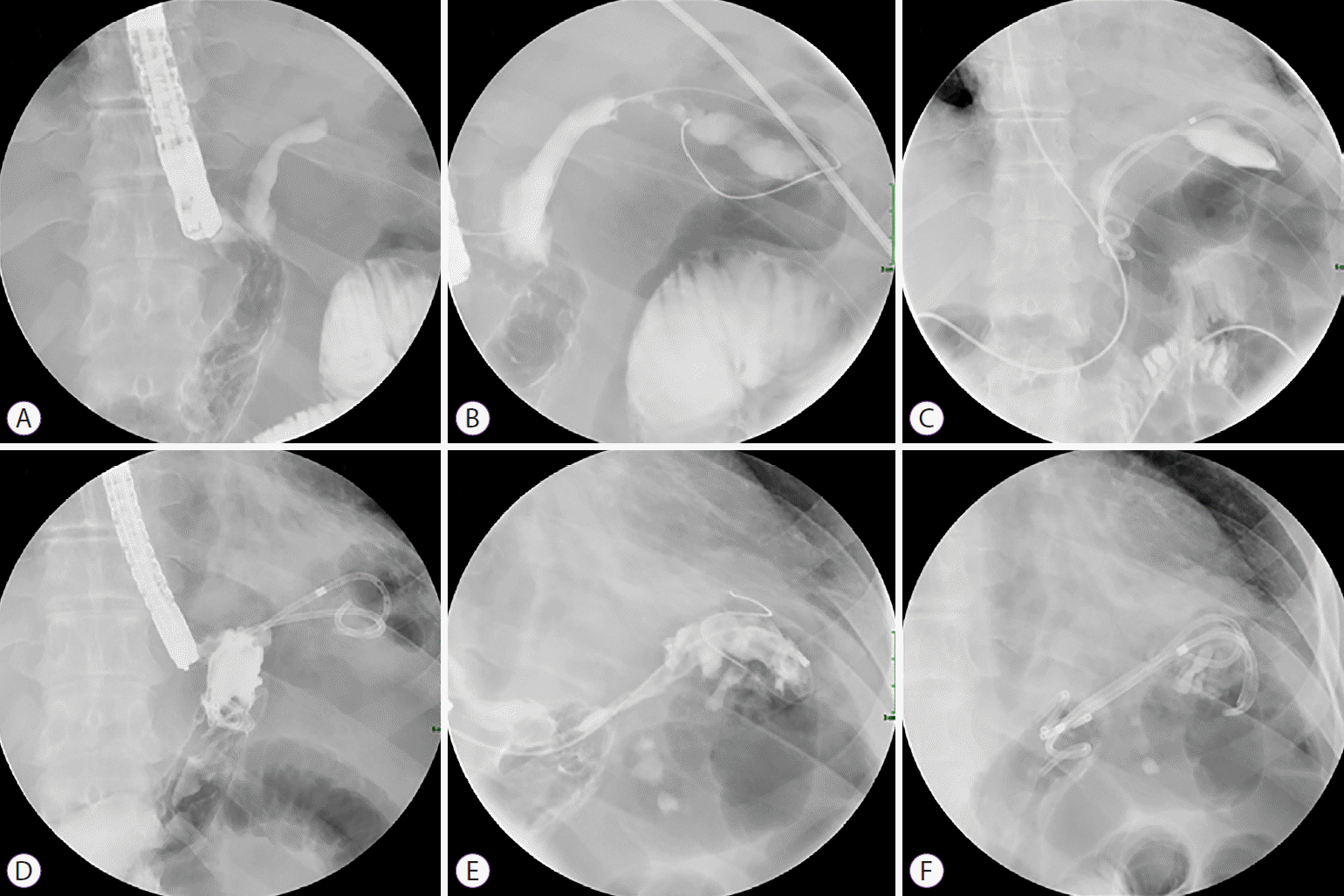INTRODUCTION
CASE REPORT
 | Fig. 1.(A, B) Post-laparoscopic sleeve gastrectomy leak communicating with subphrenic fluid collection appeared opacified during gastroscopy. (C) Endoscopic internal drainage was performed by deployment of two double-pigtail stents with the proximal part in the collection and the distal part in the gastric sleeve. (D) Initial stents were removed endoscopically two months later. (E) Contrast injection showed persistence of collection but no sign of fistula. (F) Deployment of three new stents was done. |
 | Fig. 2.(A) Computed tomography demonstrated double-pigtail stents invading the diaphragm. (B, C) Inflammatory collection with presence of a hydroaeric level around the stents and opacification of the left lower bronchus communicating with them was seen. |
 | Fig. 3.(A) A gastrobronchial fistula was demonstrated during barium swallow study four days after esophageal stent deployment. (B) Three weeks later, esophagogram showed sealing of the two ends of the esophageal stent with distal and proximal hyperplasia and no sign of fistula persistence was evident. |




 PDF
PDF Citation
Citation Print
Print




 XML Download
XML Download